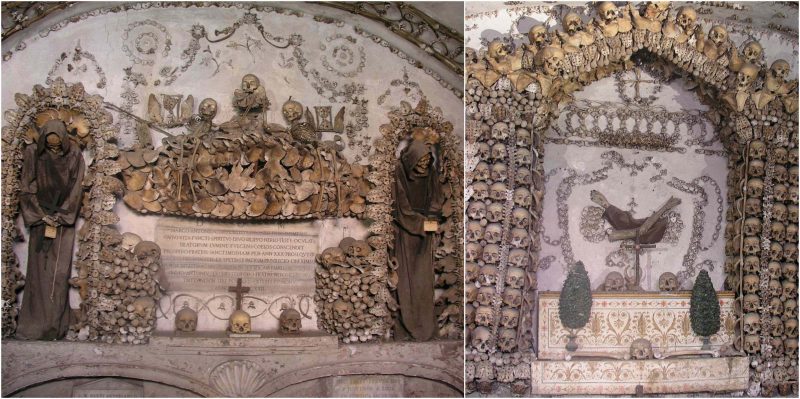One of the most unusual churches in the world is Santa Maria della Concezione dei Cappuccini, also known as Our Lady of the Conception of the Capuchins. It is located in Rome and is one of the most visited places in the city because it contains the skeletons of over 4,000 friars.
It is also known as the Cappuccini Church, and it was commissioned by Pope Urban VIII in 1626. According to the Catholic order of Capuchin friars, the skeletons should not be seen as something dark but as a reminder of our mortality. The remains are divided in five separate alcoves and some of the friars are laid out, holding crosses and wearing their vestments.
The designer of the church was Antonio Casoni, who finished the construction in 1631. What is fascinating is that from the outside, the church does not give the impression that these remains will be exposed inside. The exterior is different from the interior, and if people don’t know the story about the church and are visiting for the first time, they will be stunned.
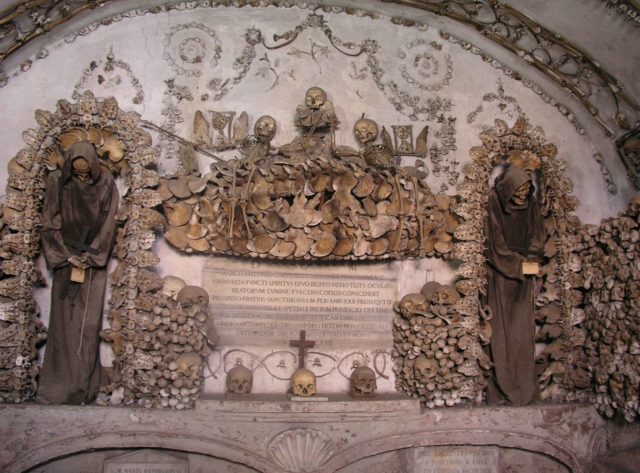
Inside is a small nave and a few separate chapels. Many of them house notable people and saints; for example, one of them is the the tomb of Saint Crispin of Viterbo, and another contains the remains of Saint Felix of Cantalice.
In the first chapel, there is an altarpiece painted by the Italian artist Guido Reni. The painting is of St. Michael the Archangel trampling Satan under his feet dressed in a Roman military cloak. Pope Urban VIII commissioned the piece in 1630, and it was completed in 1636. The other chapels have various paintings from the Baroque period, including Mario Balassi, Giovanni Landfranco, Baccio Ciarpi, Andrea Sacchi, Andrea Camassei, Alessandro Turchi, and Girolamo Muziano.
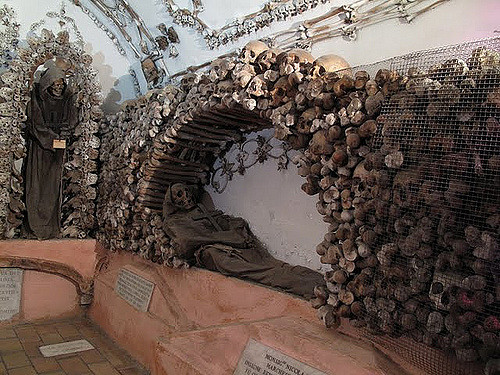
The Capuchin friars left the friary of St. Bonaventure in 1631 to live in Our Lady of the Conception of the Capuchins. While they were getting ready to move, the Pope’s brother, Antonio Barberini, who was also a friar, suggested they take the remains of their deceased brothers with them to their new home. They brought 300 cartloads’ full of remains of deceased friars.
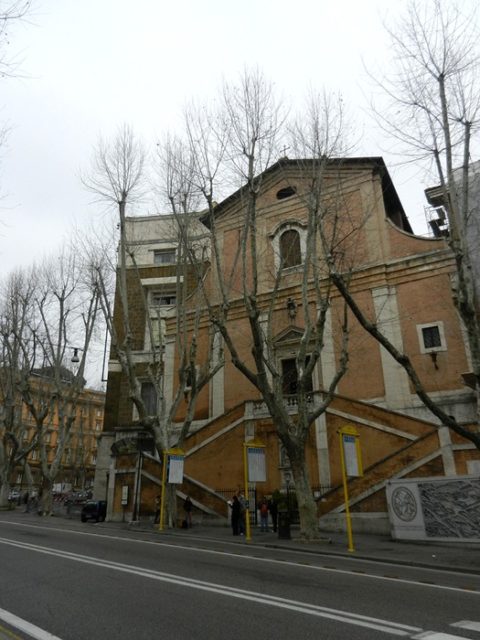
Friar Michael of Bergamo was responsible for the arrangements of the bones and skeletons in the crypt. The monks that died during the lifetime of the crypt were put in the place where the oldest skeletal remains of a former monk were buried. They were exhumed because there was not enough space for all skeletons, and the new deceased monks were buried without a coffin. Most of them are the ones mentioned before, holding their crosses, wearing their vestments. The old bones, pelvises, and skulls were used for the wall decor. They were placed there in a specific way, creating different designs and motifs full of Capuchin symbolism.
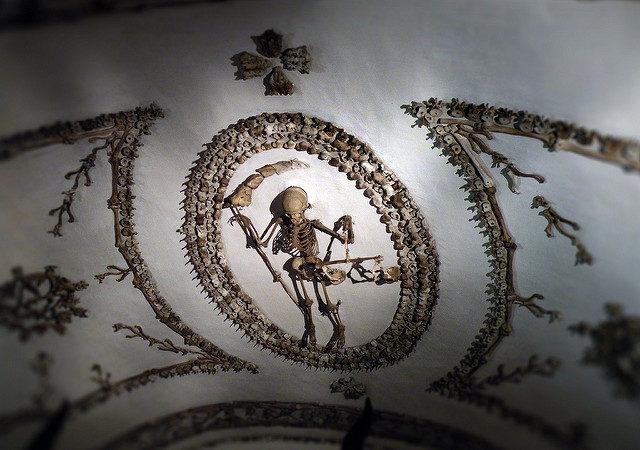
In the 17th century, many spiritual leaders prayed and meditated with skulls in their hands, practicing the Memento Mori theory. There is a plaque in one of the chapels of the church written in three languages that connects the friars with the same theory that says “What you are now, we once were; what we are now, you shall be.”
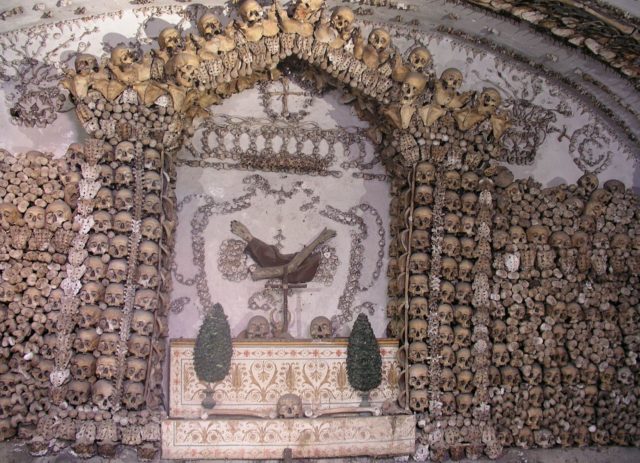
Throughout the centuries, many famous authors came to visit this magnificent place, ranging from Mark Twain to the Marquis de Sade.
Twain mentions the church in his book The Innocents Abroad and describes its unusual interior in five pages; de Sade describes it in his Voyage d’ Italie notes as the most striking place that he had ever seen.
